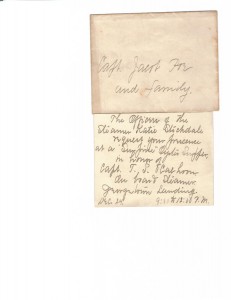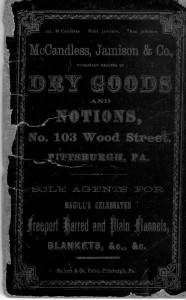Thomas Stevenson Calhoon was arguably the most famous Georgetown packet owner and captain. His career was the longest. He had probably as much experience on the Missouri as Capt Marsh Grant with whom he worked on the Ida Stockdale. My biographical data for Thomas S Calhoon has just been added a page under Biographical Data and Tales.
This dinner invitation from the officers of the Katie Stockdale to the Jacob Poe family is an interesting piece of steamboat memorabilia. The Katie Stockdale was built in 1877. Thomas S Calhoon celebrated his fiftieth birthday inn 1884. Jacob died in 1891. So the Christmas Eve surprise oyster dinner for Thomas S Calhoon took place between 1877 and 1890. I am also surprised the Katie Stockdale was docked at Georgetown Landing so late in the year.
Oysters were an expensive delicacy, and …. they were eaten the year round. An ‘oyster express/ a light wagon loaded with live oysters imbedded in straw and kept moistened with salt water, made through trips from Baltimore to Pittsburgh. The horses were changed frequently, but the driver drove all night without stopping. At Pittsburgh, the oysters were transferred to swift boats and shipped to Cincinnati, where they were placed in tanks of salt water and corn meal and kept alive for months.” [1]
References.
[1] Stanton C Crawford and Mary C Brown, Pittsburgh as Viewed from Down River, (Western Pennsylvania Historical Magazine, Vol 47, No 4, Oct 1964), p 306.


